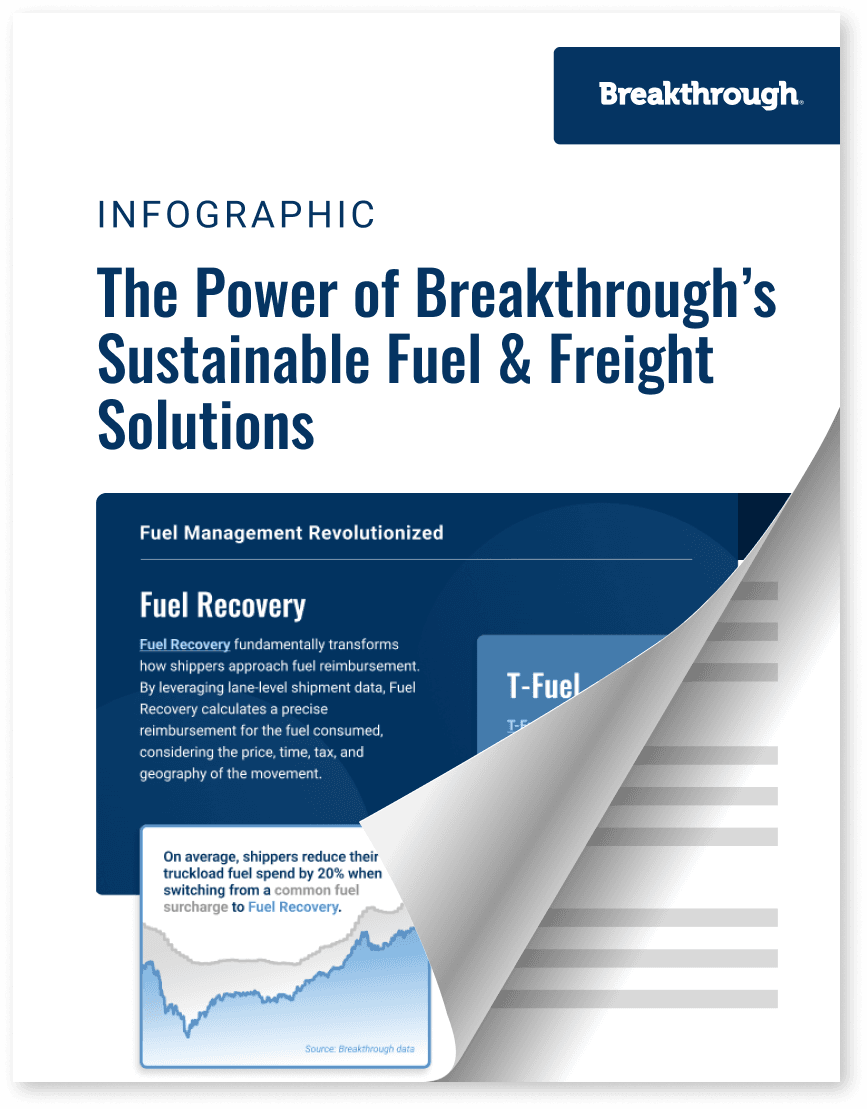The Power of Breakthrough's Sustainable Fuel and Freight Solutions

Freight
3 min read
July 17, 2024
Market Events
4 min read
July 16, 2024
Market Events
3 min read
July 8, 2024

3 min read
October 30, 2018

Share:
IMO 2020 Sulfur regulations are fast approaching, and while conversations in the industry tend to focus on the impact carriers will experience, shippers are left wondering how these changes will manifest in the marine side of their supply chains.
Ocean carriers have a host of fuel management decisions to consider when planning their strategy to navigate these drastic changes to marine fuel regulations. As carriers take action, it is important to understand how each compliance mechanism may affect the bottom line for shippers

Switching to low-sulfur fuel oil (LSFO 0.5% S) emits less SO2 and will be available at most ports, albeit at a higher price. The use of LSFO does not require expensive equipment or operational changes. We expect most carriers will use LSFO fuel to comply with the coming regulations.
Shippers can expect higher costs associated with their marine freight due to the increased cost of lower sulfur content fuel oil.
Exhaust gas cleaning technology (scrubber) installation requires an expensive upfront investment and can require long periods of inactivity for a vessel. Scrubbers enable vessels to consume cheaper, high-sulfur fuel oil (HSFO) beyond 2020, however, they do not remove NOx, CO2, and particulate matter. For this reason, they are not a viable solution for future IMO regulations. The installation of scrubbing technology has gained momentum as the prices of crude oil and bunker fuel have risen during 2018.
Shippers should expect the cost of scrubber installation to be accounted for within carriers’ surcharges as a means of recovering their capital expenditures, even though the cost of HSFO is anticipated to be considerably lower than low-sulfur means of compliance.
The world’s leading LNG suppliers are working to expand their bunkering capacity to major markets, but existing infrastructure remains limited and will take years to obtain a significant market share. Adoption does have the propensity to pay out in the long-run, however, as LNG consumption has been shown to significantly reduce SOx, NOx, CO2, and particulate matter emissions compared to oil-based marine fuels. LNG and other alternatives will become more attractive as the IMO begins to set aggressive CO2 targets in the near future.
Shippers can expect increased costs associated with the less accessible and more expensive fuel. In the long run, however, costs will remain more insulated as regulations continue to change.
IMO member countries will need to police individual vessels to ensure compliance. Some players violate the requirements and accept the consequences. While this is an option, the actual consequences of this strategy are ill-defined and introduce unwelcome risks to marine carriers’ fleets—and their budgets.
Shippers should be aware that their marine supply chain is susceptible to significant risk because the industry has yet to define the penalty for non-compliance.
As 2020 approaches it will become more clear what avenues carriers will choose to competitively manage costs and mitigate risk in the marketplace. In the meantime, the applied knowledge team will continue to monitor changes in the marine fuel landscape, delivering insights and actionable strategies to our clients.
For more information about the IMO 2020 sulfur regulation changes or about our marine fuel service offering, contact us!

3 min read
July 17, 2024
Maximize transportation efficiency with cohesive fuel and freight strategies. Discover the power of enhanced visibility, cost-effectiveness, and sustainability.
Read more
4 min read
July 16, 2024
Discover how the recent elections in Mexico and the EU are expected to influence energy policies, fuel prices, and dynamics in the transportation sector.
Read more
3 min read
July 8, 2024
Understand the state-specific changes in diesel tax rates and explore strategic solutions for shippers to accurately calculate fuel reimbursements to carriers.
Read more